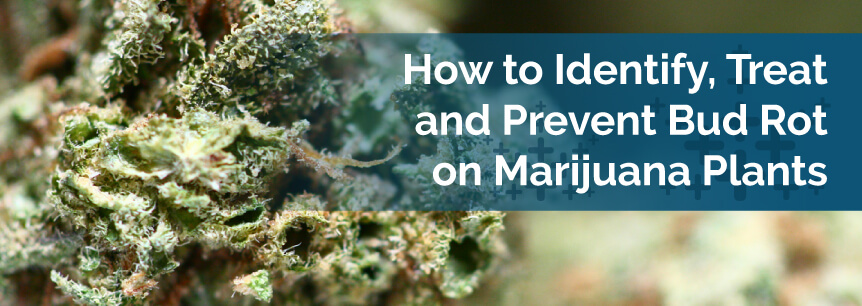
If you’re a medical marijuana grower, the odds are you’ve had to deal with bud rot at one point or another. Bud rot is one of the nastiest diseases your plants can get. It’s a fungus that attacks the weed plant and then spreads rapidly to the buds, destroying everything in its path. It is so harmful to your plants that it could destroy the entire harvest overnight.
Indeed, it is every grower’s worst nightmare. And it’s up to you to do everything in your power to protect your precious herb.
Having said that, we’ll attempt to answer the four most fundamental questions about bud rot. So, let’s dive in.
Also referred to as gray mold, bud rot is a fungal disease that thrives in cool, humid areas. It is not location-specific and can attack all marijuana plants, including seeds sitting in the soil and plants that just popped out of the ground.
The fungus that sparks gray mold or bud rot is called Botrytis cinerea. This fungus attacks the buds from the inside out. That’s why it’s so difficult to manage. By the time you see it forming on the marijuana plant, the entire bud is lost.
Marijuana plants aren’t the only plants affected by bud rot. Strawberries and peonies, among others, can also be attacked. Gray mold reaches these plants anytime because it’s transported from one place to another through spores that travel through wind and water.
However, your plants will develop bud rot only if they touch the dusty gray spores. This means that there should be a wound or tear in the outer tissue for the spores to get in the plants. That may make it seem preventable. But it’s nearly impossible to ensure your plants don’t have cracks that mold could enter through. Even caterpillars and worms can create holes that allow gray mold to infest your plants.
Identifying bud rot is quite easy. There are several symptoms that can help identify signs of gray mold before it spirals out of control.
Usually, a bud rot infection becomes noticeable in just specific parts. Sometimes only the biggest and fattest buds are affected, but other times you’ll find patches all over the plant. You may also notice areas where the leaves, buds and pistils are darkening or drying up, unlike the rest of the plant.
The affected areas are usually prominent and catch your attention easily. Even if you don’t know what bud rot is, you’ll instinctively know something is wrong since the spots don’t look like other areas of the plant.
In addition to noting the discoloration, you may also see mold on the outside of the buds. This is often the first stage, and it means the plants need to be treated immediately. With advanced gray mold, the bud will easily separate to reveal the inside, which is usually gray or brown and possibly moldy.
Depending on the life stage of the disease, rotten bud can either look white and fluffy or dark brown and gray. Sometimes it’s purple. The good news is bud rot can be addressed before it turns brown and gray. It’s rare to notice bud rot at the last stage. The moment you see weird changes in the buds, it’s likely you’ll be able to save the plant.
If bud rot has found its way to your plants, all is not lost, at least not yet. If you notice a visibly diseased plant, remove the entire plant and destroy it. Do the same to every plant that has signs of infestation. Then gather all of them and put them into a plastic bag. Finally, seal the bag tightly and throw it away.

Another method commonly used to combat gray mold is the application of Bordeaux, which is a mixture of slaked line and copper sulfate. Most medical marijuana growers use this mixture to keep gray mold at bay. It works best when sprayed onto the plants every week up to ten days.
However, it’s never a good idea to spray affected buds when your marijuana is in the flowering stage. You won’t completely destroy bud rot, and you’ll also ruin the taste, smell and appearance of your buds, making all your hard work go down the drain. Fungicides are only okay if the plant is in its vegetative stage.
Now you probably understand the importance of ensuring bud rot doesn’t grow on your plants. There are certain steps you can take to prevent gray mold from becoming a problem. This means giving your plants a warm, dry environment with proper ventilation and taking steps to stop any unwanted risk of bud rot. Try these tips:
Of course, outdoor growers don’t have it easy. They have no way to control the environment or safeguard their plants from being exposed to gray spores. If you’re an outdoor grower, hopefully you started off right by selecting a strain of marijuana that grows well in your climate. One such strain would be one that enters the flowering stage right before the rainy season, meaning it has a shorter life span than average marijuana plants.
Do you have any questions? Feel free to contact us at MarijuanaDoctors.com, and we will be happy to answer it. Of course, you can always contact the doctor nearest to you by searching through our marijuana doctor directory.
No Information on MarijuanaDoctors.Com should be used to diagnose, treat, prevent or cure any disease or condition. You can view our Full Disclaimer here.